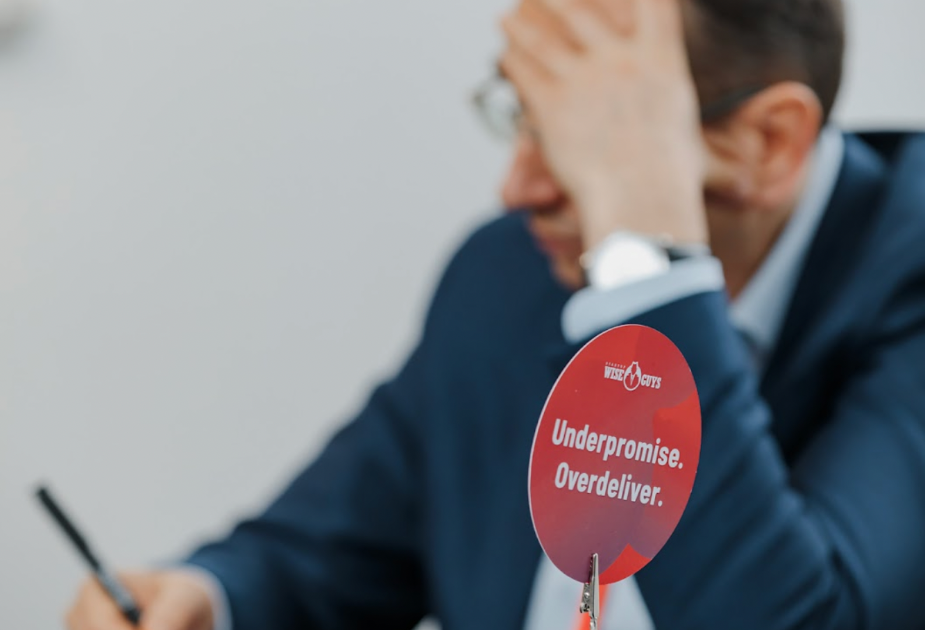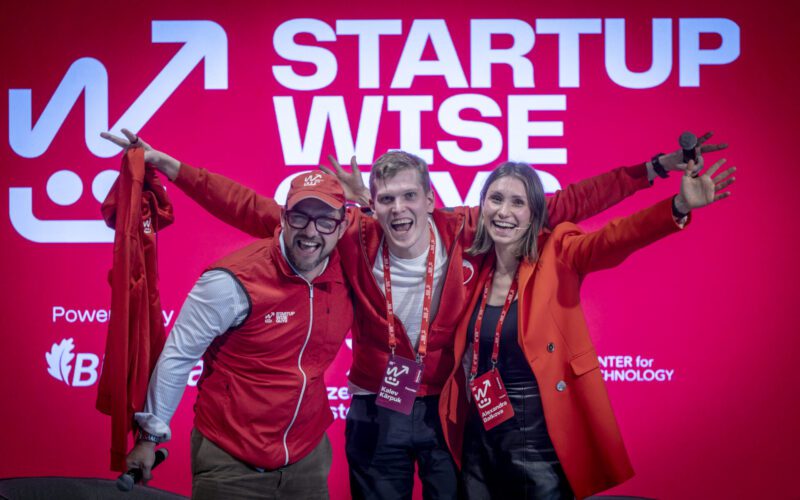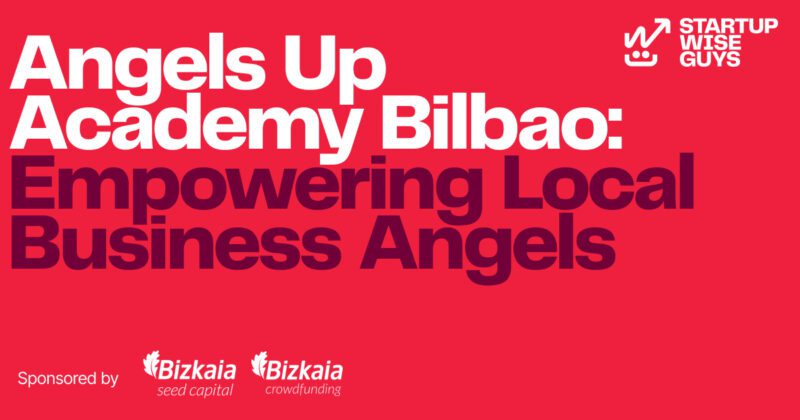7 Lessons for Startup Founders I Wish I Had Known Before Starting My First Company

In the last 10 years, I have received solid experience in launching startups, talked to thousands of potential FinTech founders from more than 100 countries around the globe, and participated in mentorship programs assisting new entrepreneurs in starting their own businesses.
I’ve learned a lot and would like to share the lessons for young entrepreneurs that can potentially save them from getting into trouble and help them avoid the most dangerous pitfalls on their way up to success.
So here they are, the 7 lessons I’ve learned during my 10 years of entrepreneurship.
Lesson 1. Right people
Your personal success depends on several strategic parameters, and you must focus on achieving the best possible combination of these parameters from the very beginning.
First – and the most important one – is choosing the right co-founders. I personally wasted 5 years working with not exactly the right people on not really the right projects – a big mistake, avoid it at all costs.
Do not start a business with a co-founder if you don’t trust them or aren’t confident you can rely on them and share the hardships of running a business.
But how do you choose the right co-founders to launch a business with?
Shared values
This is the hardest, as there’s no way to quantify a person’s values, they need to be felt. You have to dream about the same things, believe in the same things, and speak the same language when you discuss something. Finally, you have to be able to support each other.
Have doubts about a person? Then, trust your heart – it might not be the right person for your business.
Often, a business partnership is compared to a marriage. In reality, it is much more serious than a marriage.
Learning new things
Focus on learning new things. Launching and running a startup is a long road, the road made up of learning, and learning, and learning. A typical company that operates successfully in the market is the sum of the skills of hundreds or thousands of highly competent people. All together they know quite a lot.
Now, imagine you are starting a business with a bunch of your friends. Now you are competing with all of those professionals already on the market.
You might be pretty far away from what they know at the beginning, so make learning new things a big priority.
Scientific thinking
It is a way of seeking knowledge, the way of exploring the world founded on asking the right questions and trusting data, not assumptions.
When you’re tempted to make a conclusion that may sound very reasonable to you based on anything but data, beware – this is the pivoting moment. Tell yourself that it’s not really a conclusion. This is a hypothesis, and you need to validate it.
The ultimate way of validating a hypothesis is through an experiment that includes performance measurement. To make sure the validation process is credible, repeat the experiment a few times and compare the results received. They should be the same or only slightly different, this would indicate the process and the measurement are correct.
A validated hypothesis provides you with data and results that can be used to improve your product. At the same time, the results make up a foundation for the next experiment cycle.
Launching an IT startup is about running thousands of hypothesis validation cycles. Run as many experiments as you can, this will bring you closer to developing a superb product for your customers.
Being open to feedback
Be open to feedback from your colleagues, partners, and – of course – your customers. It can be painful to hear what they have to say, yet do not be defensive or ignore the feedback.
On the contrary – listen carefully, collect, and structure the opinions you asked for (and even those you didn’t actually welcome). Consider them a source of invaluable insights and consider changing your behavior or product based on what you have recently learned.
It’s crucial that your business partner has the same attitude as you will often be sharing feedback with each other. From time to time, you will need to say what people do not normally like to hear. So, both you and another person at the steering wheel should know how to effectively deal with feedback to use it for the business’s benefit.
Commitment is key
Running a startup is no walk in the park. I remember one day when my business partner and I transferred almost all our money to a company account to pay salaries to our team. It was about 60k euros and we understood we might never get our money back.
Commitment means working hard for the sake of your company regardless of the circumstances. Even with a weak product, even if the market is not right, you have many chances to succeed if you are committed. I think that in my case, commitment is what has allowed me to share these lessons today.
Lesson 2. Right idea
Ok, once you have the right business partner, what should you do next? How do you pick the best idea for your startup? What is it that you should bring to market?
10 years ago, we brainstormed dozens of ideas trying to invent something unique that no one had offered before. Each idea resembling something that had already been done before ended up in the wastebasket.
Now I can say that striving to be original was a big mistake for us, a totally wrong approach to selecting startup ideas. So why is that?
Pain and value
A startup is about adding value to many customers who experience pain by solving their particular problems.
Let us start with pain and value. Customers are already living their lives and solving their problems somehow. In many cases though, they aren’t satisfied with the traditional way of solving problems. This is a pain. If a product solves a customer’s task and eliminates the pain, that’s the value.
10X value
The most important aspect of a solution is being able to maximize its potential value for the customer. Think of the 10X rule, which states that a product should be significantly better than a current common method of solving the same problem to gain popularity.
A very classic example is what happened with cab services. 15 years ago, a popular method was to order a cab by phone, which could take 30 minutes of calling, talking, explaining the exact meeting place and waiting. Now it’s just a few minutes, with no calls at all. This is a good example of the 10X rule. The experience of ordering a cab is 10X better today than it was 15 years ago.
But why is it so important?
Because the inertia of people’s behavior matters. Normally people do not like to change their habits. Imagine how small the market share will be of a startup that brings only a small value to the market. No one is going to change their behavior without a good reason.
So, only if your product significantly improves the lives of your customers, will your startup have a chance to win the market.
Market size
Being a babysitter means adding value to a specific family, but it’s not a startup. Running a marketplace for finding babysitters could be a startup because there are many customers solving the same problem.
So, you have found a market where there are many potential customers with the same problem. But exactly how big should it be?
Some VCs say that the market size of a startup with potential should be at least 1 billion per year. I do not like this way of measuring it, because a founder should focus on customers, not abstract numbers. I find it better to look at the market in units.
Let me illustrate this point of view on a simple example.
In the case of babysitting, you may find out that there are about 10 million families with children in the USA, who spend about $2,500 per month (or $30,000 per year) for babysitting.
So, your startup is about improving the lives of 10 million families in the United States.
Let me sum it up. A startup idea worth attention should be about significantly (10X) improving the lives of millions of potential customers.
Lesson 3. Right business model
You have found a great business partner and a remarkable market opportunity. Your next step? Figure the right business model.
From a business perspective, the best possible situation is to have customers use your product for a lifetime. For many products, the customer lifespan is only a few years, but it’s best to look for a product with a potential lifespan of decades.
The right business model (some terminology)
Let us assume that a family from our babysitting example above will use your product for 10 years, spending $120 per year. In this case, the LTV is $1,200. Before you reach this value, you will definitely need to invest some money in marketing and advertising – this is customer acquisition cost, or CAC.
Calculations
Let us assume that your CAC is $200. Make sure you have a very long payback period, which in our example is 18 months. Payback is the time it takes to get back the investment in CAC. A normal payback period for small retail customers is about 5 months.
Ok, you “buy” a customer for $200, and they bring you $1,200, of which the remaining $1,000 make up your budget for everything else, including the cost of revenue (a direct cost of servers, customer support etc).
$1200-$200=$1000
Let us say your cost of revenue per customer per year is $40 per customer per year or $400 per their lifetime. This leaves you with a budget of $600 for 10 years, or $60 per year – to pay bills and further develop your product.
$1000 – $400/10=$60
Even with 1 million active customers, you will only get $60 million a year. That is not much, and this business idea does not look promising for a startup.
$60*1,000,000 = $60,000,000
So, rethink the idea, the market or the business model to find cost-effective customer acquisition channels and increase monthly revenue.
It sounds so simple: you maximize the customers’ LTV and minimize CAC. In reality, though, it’s easier said than done. In addition, even a small startup requires a budget for customer acquisition and product development, so let us talk about investments next.
Lesson 4. Investment
Over the past 10 years, I have talked to many potential investors and could not understand at first, why professional investors did not want to invest in my business. But eventually, I ended up receiving money – from unprofessional investors. Now I know this is the worst thing that can happen to a startup. Want to understand why?
- First of all, stay calm – you do not need money to grow your business… if you can prove that your idea is mature. How do you do that? Talk to VCs – this is a great way to check how well you have done your homework. If professional VCs are willing to invest in your idea, you are on the right track. If they don’t – take their feedback home and improve the idea.
- Secondly, and most importantly, unprofessional investors may lead you in the wrong direction by asking the wrong questions and measuring success from the wrong angle. The chances they will introduce you to the right people – potential employees, business partners, and future investors – are extremely low.
- Third, not every market and every company are investable from the VCs’ point of view. They are chasing unicorns and decacorns, so some markets are not big enough for them.
With the right startup idea, you can get by without any investment at all, that’s for sure. But if you attract professional investors and sell them shares in your company, you are buying years of your life. That’s priceless and certainly worthwhile.
Another important point is that where there is a market, there will be competitors. You’ve got a few months before they show up. Many of them will be extremely good, and they will come with investments from VCs, ready to buy clients and hire the best talent.
Without money, competition won’t be easy. The sad truth is, companies with brilliant ideas, but without investments, are likely to lose the market. It’s just a matter of time.
In other words, investment is fuel for your rocket. You need it to win the time and conquer the market.
Lesson 5. Competition
In my opinion, competition is a Formula 1 race where you are the pilot, engineer and pit stop team at the same time. If other teams have great cars with strong engines, new tires and many other important things for the race, that’s a good signal for you. A lack of competition means there is no market worth entering.
Pizza vs. Uniqueness
It may sound strange, but in many cases, running a pizza restaurant in a city with hundreds of them is a much smarter decision than coming up with something unique. You have more chances to make money with pizza than with a unique product that nobody else offers. Has it ever occurred to you that since no other company provides it, maybe it’s because no one needs it?
Instead of prioritizing uniqueness, entering a competitive market with a reinvented product is a much more promising way, a way of a startup.
Mr. Second
Remember, Facebook was not the first social network, Google was not the first search engine, and the iPhone was not the first cell phone.
Your startup has a chance for success if you learn from competitors and stay focused on what your customers need.
On the one hand, there is no ingenious invention that will work forever, and something better will certainly be offered in the future. On the other hand, customer expectations are growing, they desire the same UX they have come to expect from other world-class services.
So, reevaluate what customers need, and reinvent what you do, again and again, and again. This might turn out to become a game changer for your startup.
Lesson 6. Execution is King
When you are competing fiercely with large companies, you have an execution problem. Anyone can easily have a promising startup fail on execution when everything is great on paper but terrible in reality.
Playing with a value proposition canvas, making assumptions in Excel, talking to VCs and motivating each other by dreaming about a great product and brilliant opportunities in the future is not the same as facing tons of development, marketing, and support problems all at once.
Assumptions do not work
Be prepared from the beginning that your assumptions do not work and that you have underestimated everything several times over. Even a simple website that you can show someone without feeling ashamed of it can take up to 6 months of work.
Organic traffic through search engines is a channel for customer acquisition, but do not rely on it in the first year because you need to put a lot of effort into search engine optimization before you can get visible results.
For an IT startup, you need to introduce the hypothesis testing lifecycle, the A/B testing lifecycle, the product development lifecycle, and the software development lifecycle.
Team & efficiency
You need to hire highly skilled people who will help you pursue your goals, and you need to pay them competitive salaries. The best talent is already employed by the top companies and is paid very well. It’s important to make your startup attractive to talent.
Beware though – as the number of employees increases, your startup could turn into a slow company and lose efficiency surprisingly fast. It’s hard to find a company that doesn’t struggle with unproductive meetings, communication problems, unnecessary bureaucracy, etc. At this point, this might become your problem as well.
Lesson 7. Exit plan
When founders devise plans for their startup, they hardly ever think about exiting it. This is a big mistake. There are several exit options for founders to choose from before starting a business.
The Death Valley
The first – and most frequent – exit is to close the business, with debt and problems.
The numbers below are pretty prominent:
- 5 out of 10 new businesses fail in the first 5 years of operation (according to the U.S. Bureau of Labor Statistics)
- 7.5 out of 10 high-risk startups fail
- 9 out of 10 startups fail (source and some more stats)
You are starting a business in death valley. Remember that it is your decision and it is you who’s responsible for taking such a risk.
Moment of glory
The second option for exit is a moment of glory when you find a buyer willing to take over your company and pay your price for its shares. Typically, news like this evokes excitement about the valuation of startups and the tons of cash shareholders make in M&A deals.
But the truth is, mergers and acquisitions can mean the failure of a startup in many cases. Yet, let’s be fair – this type of failure is incomparably better than the first option.
To illustrate it, think of Instagram, which was sold for half a billion when Snapchat rejected a takeover offer. Even today, when Snapchat’s shares are 7 times cheaper than when it was acquired, the company’s valuation is 16.6 billion.
Path to fame
The third option for a startup is no exit at all. Jeff Bezos, Mark Zuckerberg and many other startup founders are still in charge of their companies. Incredibly, no exit at all could be a real dream startup.
Zombie, or cash cow
Unfortunately, founders are more likely to be unable to exit because there are no buyers for their business. It is typical for a company that is small and not attractive to investors.
Companies of this type can survive for years with no real business opportunities. We call them zombies. If you are stuck with a zombie business, do not waste your time and close it as soon as possible.
A better version of zombies are small cash cows that provide dividends to the founders, but take up a lot of their time. It’s still far from a great startup, but at least a small reward for all their efforts.
A lot of hard work ahead
I still think that in 1-3 years you will be done with your work and sitting at the top of the pyramid enjoying your jet-set life while others work for you? Very unlikely. What’s much more likely is finding yourself in the office at 9 pm on Saturdays weekly, even in 10 years. In other words, get ready to be content with an office as your jet-set life from now on.
If you are running your own startup, there’s one thing you can be sure of – a startup is no picnic, and there is a lot of hard work ahead of you.

About the author:
Alex Malyshev is the CEO and a co-founder at SDK.finance, payments software vendor. Alex is a mentor at the Startup Wise Guys Accelerator, a public speaker, and scientific thinking advocate. A sociologist by education, he built a 12-year career in PR and marketing, and now Alex is an entrepreneur with 10 years of experience.


